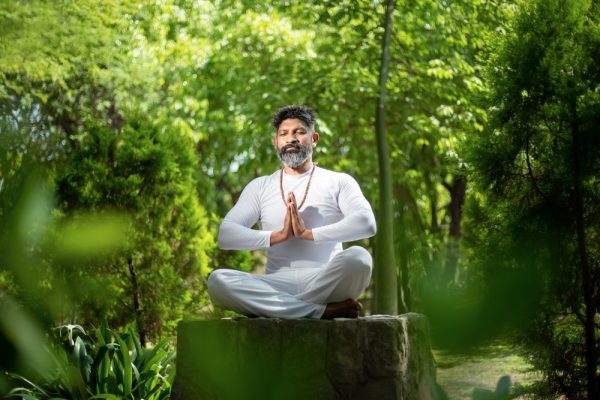Imagine yourself in a serene temple, surrounded by the calming sounds of chanting and the gentle waft of incense. As you look into the depths of your mind, you find solace and peace through the practice of yoga.
But what does yoga really mean in Hinduism? In this blog post, we will explore the spiritual significance of yoga as a religious practice, not only for ancient Indians but also in the modern world.
The Journey Begins
There are many forms of yoga or types of yoga taught by yoga teachers around the world. But do you know that the system of yoga goes beyond physical movement?
In Hindu philosophy, yoga is not merely a physical exercise but a profound spiritual journey. It is the path to connect with Brahman, the ultimate reality, and attain spiritual enlightenment.
Through the practice of yoga, Hindus seek to establish a deep and intimate relationship with the divine. For them, the practice of yoga leads to the union of the individual soul with the universal consciousness.
Unveiling the Essence of Yoga
The word yoga is derived from the Sanskrit word “yuj,” meaning to unite or join. It signifies the union of the individual soul (atman) with the cosmic soul (Brahman). This union is achieved by harmonizing the body, mind, and spirit through various yogic practices. This signifies how yoga is a physical, mental, and spiritual experience.
The Four Paths of Yoga
In Hinduism, there are four main paths of yoga: Karma Yoga, Bhakti Yoga, Jnana Yoga, and Raja Yoga. Each path emphasizes different approaches to reach spiritual liberation.
Karma Yoga involves selfless action, performing deeds without attachment to the outcome. By surrendering the fruits of your actions to a higher power, you cultivate a sense of detachment and selflessness.
Bhakti Yoga is the path of devotion and love towards a personal deity. It encourages deep reverence, worship, and surrender to the divine. Through devotion, one seeks to merge their individual consciousness with the divine presence.
Jnana Yoga focuses on knowledge and wisdom. It involves contemplation, self-inquiry, and the study of sacred texts. By developing intellectual understanding and realizing the true nature of the Self, one transcends the limitations of the material world.
Raja Yoga, also known as Ashtanga Yoga, is the path of meditation and control of the mind. By practicing meditation, breath control (pranayama), and physical postures (asanas), one achieves a state of stillness and tranquility.
The Significance of Yoga in Hindu Rituals
Yoga holds a significant place in Hindu rituals and ceremonies. It is often performed in temples, ashrams, and sacred spaces.
Yogic postures and breathing techniques are incorporated into religious practices to help individuals attain a state of purity and prepare their minds for worship.
The Yoga Sutras of Patanjali
One of the most well-known texts on yoga is the Yoga Sutras of Patanjali. Written around 400 CE, it serves as a guide for spiritual aspirants on the path of Raja Yoga.
The Yoga Sutras feature the eight limbs (ashtanga) of yoga, which include ethical principles, breath control, physical postures, and meditation. These limbs serve as a guide for individuals seeking spiritual liberation through the practice of yoga.
The Evolution of Modern Yoga
While many associate yoga with physical postures (asanas), it is essential to understand that these postures are only a small part of the broader philosophy and practices of yoga in Hinduism.
In recent years, there has been a widespread commercialization and modernization of yoga, often disconnected from its spiritual roots. However, many Hindu practitioners continue to emphasize the spiritual significance and traditional teachings of yoga.
Yoga as a Religious Experience
Yoga may have originated in ancient India but has now evolved into a global phenomenon. However, it is crucial to understand that the essence of yoga in Hinduism goes beyond physical exercise.
It is a deeply spiritual practice aimed at attaining union with the divine. Through the four paths of yoga, individuals can cultivate selflessness, devotion, knowledge, and meditation, ultimately leading them towards spiritual liberation.
By immersing yourself in the rich traditions of yoga, you embark on a journey of self-discovery and transcendence. So in essence, the practice of yoga is a religious experience, a way to connect with the divine and find inner peace.
May this blog post inspire you to go deeper into the spiritual significance of yoga, and may your practice lead you towards spiritual enlightenment. Namaste.





